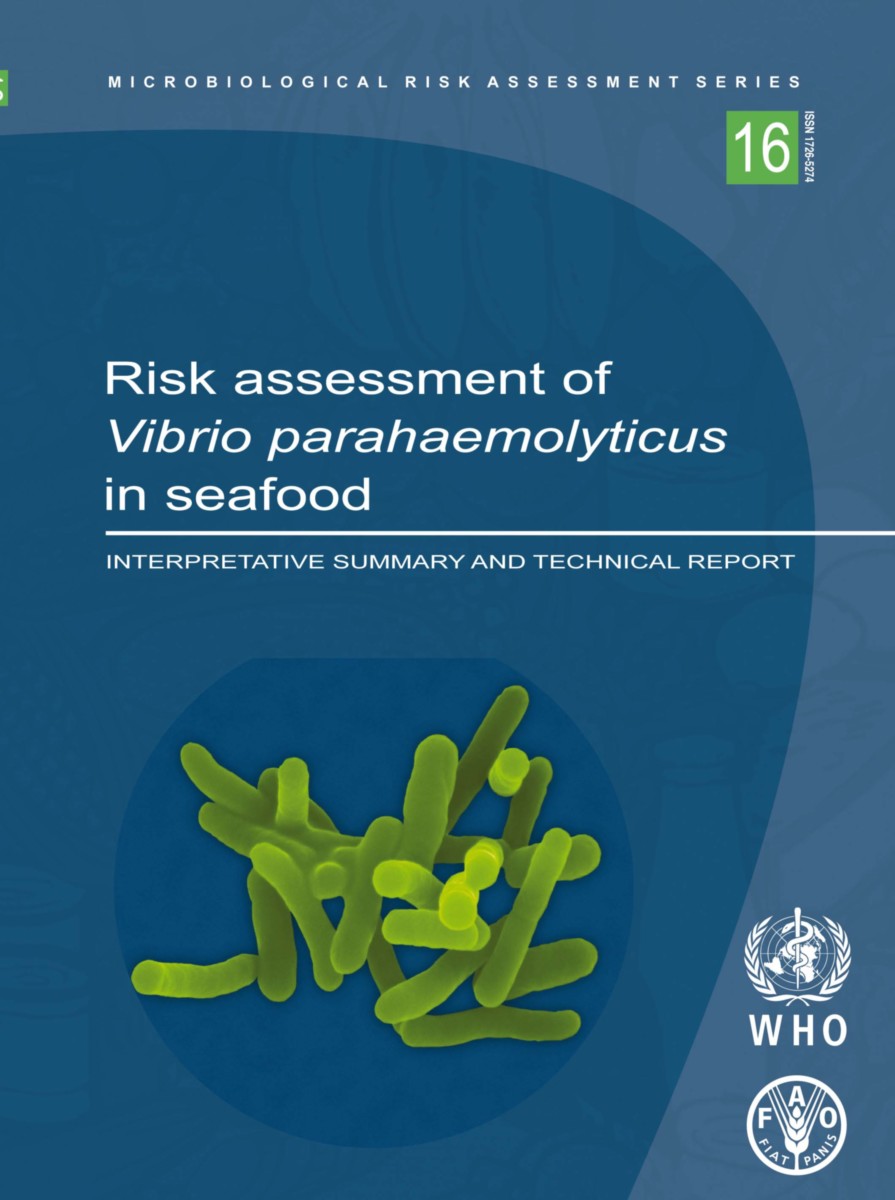Risk Assessment of Vibrio Parahaemolyticus in Seafood
- Publisher
World Health Organization - Published
1st November 2011 - ISBN 9789241548175
- Language English
- Pages 184 pp.
- Size 6.25" x 9.25"
Vibrio parahaemolyticus are common causes of diarrhoeal disease worldwide. These marine micro-organisms, native in estuarine waters globally, concentrate in the gut of filter-feeding molluscan shellfish, such as oysters, clams and mussels. Raw and undercooked seafood, including finfish, represent the principal vehicle of transmission to humans.
This volume considers the applicability of an assessment of the public health impact of raw oyster consumption, developed in one country, to assess the public health risk associated with the consumption of raw oysters harvested in other countries where different growing and harvesting scenarios might exist. The approach is also applied to bloody clams and finfish to establish if such a risk assessment can also be adapted to other types of shellfish and finfish. This work is therefore divided in three parts focusing on (i) risk assessment of Vibrio parahaemolyticus in raw oysters, (ii) risk assessment of Vibrio parahaemolyticus in bloody clam and (iii) risk assessment of Vibrio parahaemolyticus in finfish. As well as providing insights on the risks associated with consumption of these commodities, the work also addresses how to make maximum use of existing and/or limited resources.
This volume and others in the Microbiological Risk Assessment Series contain information that is useful to both risk assessors and risk managers, including international scientific committees, the Codex Alimentarius Commission, governments and food regulatory agencies, scientists, food producers and industries and other people or institutions with an interest in the area of microbiological hazards in foods, their impact on human health and food trade and their control.
World Health Organization
World Health Organization is a Specialized Agency of the United Nations, charged to act as the world's directing and coordinating authority on questions of human health. It is responsible for providing leadership on global health matters, shaping the health research agenda, setting norms and standards, articulating evidence-based policy options, providing technical support to countries, and monitoring and assessing health trends.


